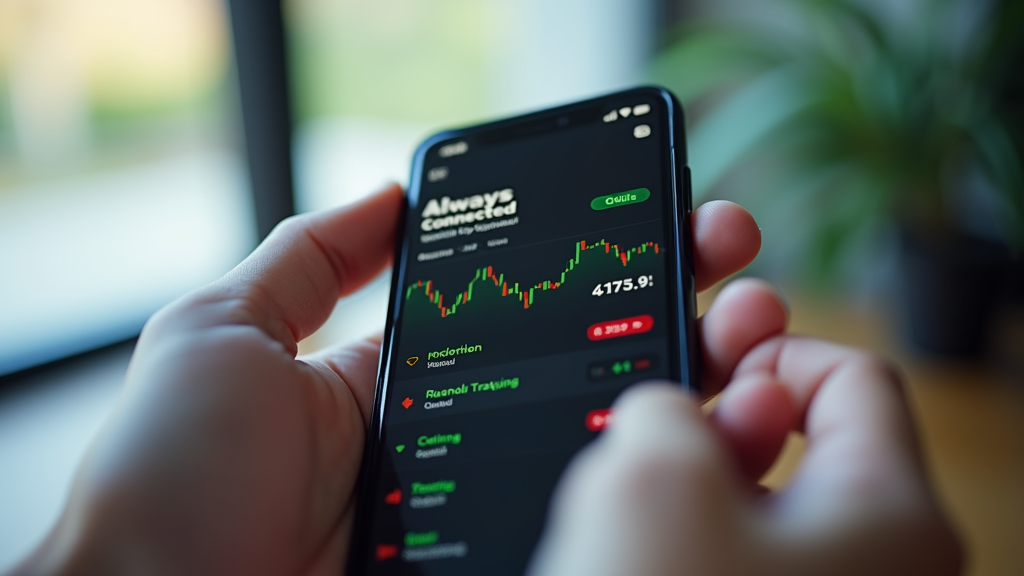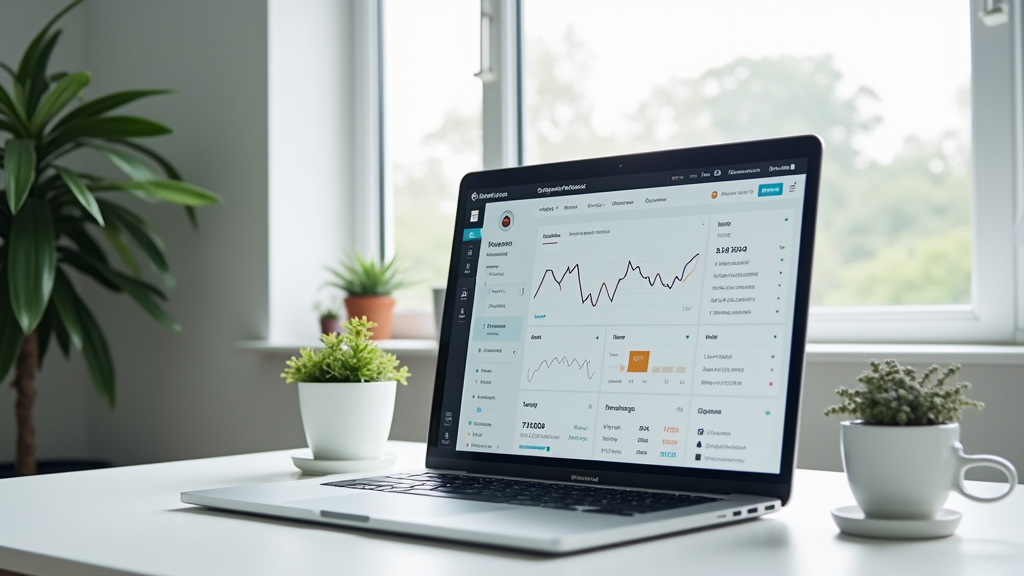
Why Track Stock Prices
You need quick access to stock price changes to make smart investment choices in today's market. Your investment success often depends on how fast you can spot and react to price movements.
Checking stock prices manually on financial websites might seem like a good approach, but it has serious drawbacks. You might miss important price changes while you're busy with other tasks. The time it takes to log in and check different stocks means you're always a step behind the market.
Automated stock price trackers can send you alerts the moment prices hit your target levels. You can focus on your daily activities while staying confident that you won't miss important market moves.
Real-time vs Delayed Data
Real-time stock price data shows you exactly what's happening in the market right now, updating prices instantly as trades occur. Delayed data, on the other hand, shows you prices from 15 minutes ago, creating a gap between what you see and what's actually happening in the market.
Trading with delayed data is like trying to drive while looking only in your rearview mirror - you're always reacting to old information. Your buy orders might execute at higher prices than expected, and your sell orders could miss their targets completely. This 15-minute lag can be especially costly during fast-moving market conditions, when prices can change dramatically in just a few seconds.
Real-time data gives you the power to make split-second decisions based on current market conditions, which is essential for day trading and swing trading. Your ability to spot and act on opportunities improves significantly when you can see price movements as they happen, rather than waiting for delayed updates.
Essential Tracking Features
A reliable stock price tracker needs more than just basic price updates to help you make informed investment decisions. Your tracker should include real-time data, customizable charts, and news integration to give you a complete view of market movements.
Price alerts keep you informed about significant price changes without constant manual checking, while portfolio integration helps you see how new stocks fit into your existing investments. Technical indicators like moving averages, relative strength index (RSI), and trading volume give you deeper insights that simple price monitoring can't provide.
These essential features work together to help you spot trading opportunities and potential risks faster. By combining alerts, portfolio tracking, and technical analysis, you can make decisions based on data rather than emotions.

Mobile vs Desktop Tracking
Your stock portfolio doesn't stop moving when you step away from your computer, and neither should your ability to track it. Mobile stock tracking lets you stay connected to your investments whether you're at lunch, in a meeting, or on vacation.
If you think checking your stocks only from your desktop computer is enough, you might be missing crucial trading opportunities throughout the day. Quick market changes can happen at any moment, and waiting until you're back at your desk could mean missed profits or preventable losses. Your success in the market often depends on how quickly you can react to news and price movements.
Finding the right mix of mobile and desktop tracking helps you make the most of both worlds. You can use your desktop for detailed analysis and research while keeping your mobile device ready for quick checks and urgent trading decisions.
Data Visualization Tools
Clear data visualization helps you spot market trends and make better trading decisions in seconds. Your ability to quickly process market information depends on how well your data is presented visually.
Basic line charts only show you part of the story in stock tracking. Candlestick charts reveal crucial price action patterns that simple lines miss, while volume charts help you confirm trend strength. Adding technical indicators like Moving Averages, RSI, or MACD can show you hidden market momentum and potential reversal points.
You need to pick visualization tools that match your trading timeframe and strategy. Whether you day trade or invest long-term, choose tools that show you the specific data points you need without overwhelming your screen with unnecessary information.
Price Alerts Strategy
Setting up stock price alerts is a simple yet powerful way to stay on top of market movements without constant monitoring. You can create alerts for both upward and downward price movements to catch potential buying opportunities or protect your investments.
Many investors make the mistake of setting too many alerts, leading to alert fatigue and missed important signals. Setting unrealistic price targets, like expecting a 50% jump in blue-chip stocks within a week, can waste your time and create false expectations. Another common error is configuring alerts without a clear action plan for when they trigger.
A well-planned alert system should focus on your most important positions and include specific price points that align with your investment strategy. Your alerts should trigger actions you've planned in advance, making your investing more systematic and less emotional.

Integration Capabilities
Your trading success depends on how well your tools work together. When your trading platforms and analysis tools sync smoothly, you save time and reduce mistakes.
Using separate tools for different trading tasks creates extra work and slows you down. You waste time copying data between programs and risk making costly errors. Having to switch between multiple screens and programs makes it harder to react quickly to market changes.
Modern trading solutions combine all the features you need in one place. These all-in-one platforms help you trade faster and more accurately by keeping everything connected.
Data Security Considerations
Your stock tracking data contains sensitive information about your business assets and inventory movements. Protecting this data isn't just about following rules - it's about keeping your business safe from theft and fraud.
Many small business owners think their stock data isn't valuable enough to attract hackers, but this is a dangerous assumption. Free or unverified tracking tools might lack basic security features like encryption and secure authentication. Using these tools can expose your business to data breaches, financial losses, and theft.
You can spot secure tracking solutions by checking for basic security features like password protection, data encryption, and regular security updates. The best way to protect your business is to choose tracking tools from established companies with clear security policies.
Cost vs Value Analysis
When choosing stock tracking tools, you need to weigh the monthly subscription costs against the potential returns they can help you generate. Good tools can help you spot profitable trades faster and reduce losses through better risk management features.
Many traders start with free stock tracking platforms thinking they'll save money, but this approach often costs more in the long run. Free tools typically have delayed market data, limited analysis features, and restricted access to important trading indicators. You might miss profitable trades or make costly mistakes due to incomplete information.
Your choice of stock tracking tool should match your trading style and investment amount. Take time to test different paid options through their free trials to find the right balance between cost and features you'll actually use.
Common Questions About Trackers
As more people start investing in stocks, questions about choosing the right stock price tracker keep popping up. Let's address the most common questions to help you pick the right tool for your needs.
Q: How reliable is the data from stock price trackers?
Most reputable stock trackers get their data directly from stock exchanges with minimal delay, usually less than 15 minutes for free services and real-time for paid versions. Your best bet is to choose established services that clearly state their data sources and update frequencies.
Q: What features should beginners look for in a stock tracker?
Beginners should focus on basic price alerts, simple charts, and clear buy/sell indicators. You don't need complex technical analysis tools when starting out - focus on services that offer clean interfaces and educational resources.
Q: Are paid stock trackers worth the investment?
While free trackers work well for casual investors, paid services offer faster data updates and more detailed analysis tools. The choice depends on your trading frequency - daily traders benefit more from paid services than long-term investors.
Q: Should I use mobile or desktop apps for tracking stocks?
Mobile apps are great for quick checks and alerts on the go, while desktop versions offer better chart analysis and multiple window views. Consider using both - desktop for detailed analysis and mobile for quick updates.
Q: Can stock trackers work with my other investment tools?
Modern stock trackers often connect with portfolio management tools and trading platforms. For example, Widget Bloom offers stock tracking widgets that integrate smoothly with Notion, making it easy to monitor stocks while managing your investment research.
When choosing a stock tracker, focus on reliability and the features that match your investment style. Remember that the best tracker is one that fits your workflow, which is why solutions like Widget Bloom's integration options can make a big difference in your daily investment routine.
